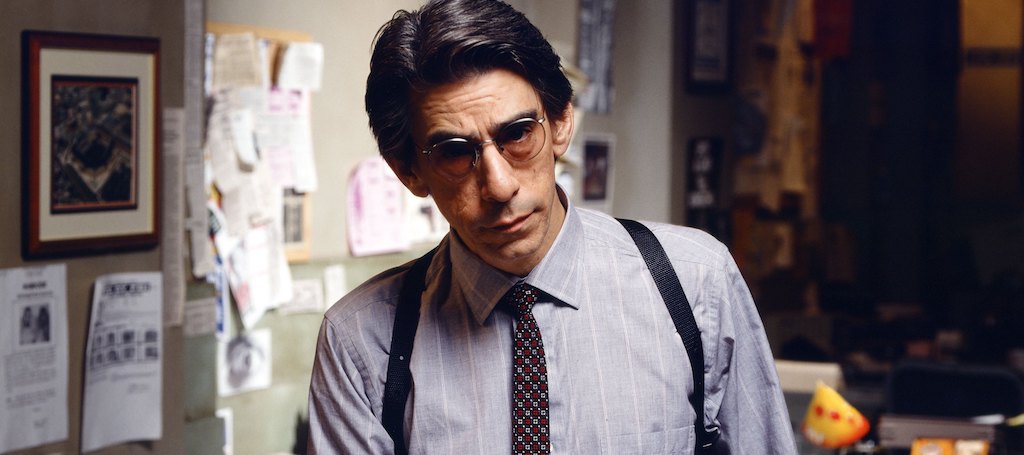February 27, 2003
Children’s Television Host Fred Rogers succumbs to stomach cancer at 74.
The talented writer and puppeteer, known to generations of children simply as “Mr. Rogers,” hosted “Mr. Rogers’ Neighborhood” on public television for more than 30 years.A native of Latrobe,
Pennsylvania, Rogers filmed the famed show in Pittsburgh, 30 miles east of his
hometown. He studied early childhood development at the University of
Pittsburgh and, in 1962, was ordained as Presbyterian minister with a mission
to work with children and families through television. Beginning in 1954, he
worked as a puppeteer on a show called “The Children’s Corner,” before
beginning work on his own show, which first aired in 1968.
Singing his well-known
theme song, “It’s a Beautiful Day in the Neighborhood,” Rogers would enter his
living-room-like set at the beginning of each episode, changing his shoes and
sweater. He would then take his viewers on a magical trolley ride to the
“Neighborhood of Make-Believe,” where he introduced them to characters such as
King Friday XIII, his wife Queen Sara Saturday, Curious X the Owl, and
Henrietta Pussycat. Even in an era of slick packaging and new technology in
children’s programming, Rogers found continued success by sticking to his
original message—that children should love each other and themselves. He aimed
to help children deal with troubling emotions, like fear and anger, as well as
everyday problems, like visiting the dentist.
Rogers
composed most of his show’s songs and did much of the puppeteering and voices
himself. Despite countless awards and honors, including four Emmys® and a
George Foster Peabody Award, Rogers once remarked, “I have never really
considered myself a TV star. I always thought I was neighbor who just came in
for a visit.” He taped his last show in December 2000, but came out of
retirement briefly to film public service announcements helping parents and
children deal with the September 11th tragedy. One of Rogers’ trademark red
sweaters now hangs in the Smithsonian Institution in Washington, D.C.
February 28, 1983
Last episode
of M*A*S*H airs. M*A*S*H,
the cynical situation comedy about doctors behind the front lines of the Korean
War, airs its final episode on this day in 1983, after 11 seasons. The last episode drew 77 percent of the television viewing
audience, the largest audience ever to watch a single TV show up to that time.
M*A*S*H premiered on the CBS television network in September 1972.
Under threat of cancellation during its first season because of low ratings,
the show turned things around the following year, landing in the top 10 in the
ratings and never dropping out of the top 20 for the rest of its run. While the
show began as a thinly veiled critique of the Vietnam War, its focus switched
to more character-driven plotlines after that war’s anti-climactic end,
allowing the series to continue to hold the public’s attention as it developed.
In the middle of the show’s tenure, Alda began to take more and more creative
control, co-writing 13 episodes and directing more than 30, including the
series finale. Alda became the first person ever to win Emmy Awards for acting,
directing and writing for the same show.
Elements such as long-range and tracking camera shots as well as
sophisticated editing techniques distinguished M*A*S*H from more
traditional TV sitcoms. From the beginning, the influence of Altman’s movie was
evident in the cinematic nature of the show’s camera work. In addition, each
half-hour episode of M*A*S*H contained a signature mixture of dramatic
and comedic plot lines, and its success marked the rise of a new genre of TV
show dubbed “dramedy.”
After earning consistently high ratings throughout its 11-year run, M*A*S*H
enjoyed enduring popularity in the following decades, as it became one of the
world’s most syndicated shows. It also spawned an unsuccessful spin-off, AfterMASH,
which CBS aired from 1983 to 1985.
March 4, 1968
The Dick Cavett Show first aired.
- ABC daytime, (March 4, 1968–January 24, 1969) originally titled This
Morning
- ABC prime time, Tuesdays, Wednesdays
& Fridays (May 26 – September 19, 1969)
- ABC late night (December 29, 1969 – January 1, 1975)
- CBS prime time, Saturdays (August 16 –
September 6, 1975; this version was actually more of a variety show)
- PBS, early evenings, weeknights (October 10, 1977
– October 8, 1982)
- USA Network prime time
(September 30, 1985 – September 23, 1986)
- ABC late night,
Tuesdays & Wednesday nights (September 22 – December 30, 1986)
- CNBC (April 17, 1989 –
January 26, 1996)
- TCM (2006–2007)

Stay Tuned
Tony Figueroa











